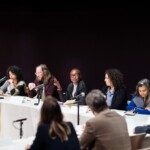
Author Archives for AndrasAdmin


Renewing the Institution: How Do Museums Remain Relevant?
Leave your thoughts <p>Many significant US art museums have just completed or are completing redesigns and extensions. These institutions are not only adding more welcoming facilities, they are also adapting to new times. From integrating new technologies to finding new ways of working and engaging audiences, museums are seeking to reassert their relevance today. Here, three leaders reveal how they are resetting their institutions. As part of Art Basel Conversations, András Szántó will lead a discussion featuring Silvia Karman Cubiñá (Executive Director and Chief Curator, The Bass, Miami Beach), Jillian Jones (Deputy Director, Buffalo AKG Art Museum, Buffalo), and Tonya M. Matthews (President and CEO, International African American Museum, Charleston).</p>
Out of the Picture
Leave your thoughts <p>Out of the Picture is a feature-length film about art critics living through a period of transformation for both art and media. Not only has the art world changed, Art’s place in the world has changed, too. All of this change makes the job of discerning what’s genuinely artful, what’s worthy of our collective attention—the pathfinding role of critics—as essential and challenging as it’s ever been. Many of the survey’s questions in the film replicat those of a seminal study done 15 years prior by the National Arts Journalism Program at Columbia University, under the leadership of András Szántó, who was an adviser to our survey and the documentary film.</p>
Pinacoteca Contemporânea
Leave your thoughts <p>On Saturday October 28, join András Szántó, author of the book “The future of museums” and Paula Zasnicoff, from Arquitetos Associados, for a conversation on new perspectives for art institutions, moderated by architect Isabel Xavier, at the the recently opened Pina Contemporânea building in Sao Paulo.</p>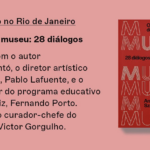
Portuguese Edition of “The Future of the Museum: 28 Dialogues”
Leave your thoughts <p>This Thursday October 26, at 7 p.m., at Inclusartiz, in Rio de Janeiro, the launch of the Portuguese edition of “The Future of the Museum: 28 Dialogues” will take place, with a conversation between the author and guests about possible ways to build an empathetic, aggregating and relevant museum for contemporary audiences. The conversation will be with the author András Szántó, the artistic director of the Museum of Modern Art in Rio de Janeiro (MAM Rio), Pablo Lafuente, and the coordinator of Inclusartiz’s educational program, Fernando Porto. Mediation by Inclusartiz’s chief curator, Victor Gorgulho.</p>
András Szántó at the International Book Biennial in Jaraguá Do Sol
Leave your thoughts <p>What is the role of museums today? In a world of deepening inequality, amid political and environmental crises, how can we combine new approaches to curation, audience engagement, technology, inclusion and learning to expand the role of art and culture in society? András Szántó will discuss the future of the museums at the International Book Biennial in Jaraguá Do Sol, Brazil. After the talk, there will be a book signing for “The Future of the Museum: 28 Dialogues”.</p>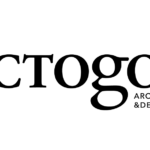
Capturing the Mindset of a Generation of Museum Architects
Leave your thoughts <p>András Szántó spoke with Hungarian magazine Octogon about what kind of “hardware” the art institutions of the future will need. Read the full interview with the link. </p>
Icon Magazine
Leave your thoughts <p>“Traditional museum buildings are imposing, often built in a sepulchral neoclassicist style that hulks over people below while insisting on a particular Western-centric idea of art and history. There have been some changes since – many a side effect of the commercialisation of museums as competing tourist attractions with an eye on audience numbers – but the old model remains robust even as architects and museum directors have tried to create museums that reflect changing times”, writes Joe Lloyd in his review of “Imagining the Future Museum: 21 Dialogues with Architects” by András Szántó.</p>
Jeffrey Gibson, Co-Presented by SITE Santa Fe, To Represent the United States at La Biennale di Venezia
Leave your thoughts <p>SITE Santa Fe, New Mexico, in cooperation with the Portland Art Museum, Oregon, and the U.S. Department of State’s Bureau of Educational and Cultural Affairs has announced that Jeffrey Gibson, will represent the United States at La Biennale di Venezia, the 60th International Art Exhibition. We assisted both Jeffrey Gibson Studio and SITE Santa Fe in past planning work, and congratulate them on this landmark endeavor.</p>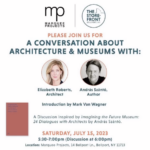
Architect Elizabeth Roberts in Conversation With András Szántó
Leave your thoughts <p>On Saturday, July 15th, from 5:30-7 PM at Marquee Projects in Bellport, Long Island, author András Szántó will be joined by architect Elizabeth Roberts for a conversation about architecture and museums, inspired by “Imagining the Future Museum: 24 Dialogues with Architects”, Szántó’s latest book.</p>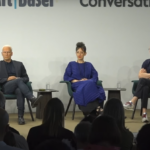
Art Basel Conversation: The Architecture of the Future Museum
Leave your thoughts <p>As museums seek to become more open, community-centered, experiential, digital, and connected to nature, architects can help realize their ambitions. Moderated by András Szánto, this conversation explores how architecture can lead the way in advancing and enhancing the museum. With Lina Ghotmeh(Founder, Lina Ghotmeh Architecture, Paris), Klaus Biesenbach (Director, Neue Nationalgalerie, Berlin), Kulapat Yantrasast (Founder and Creative Director of WHY, Los Angeles) and Jacques Herzog (co-Founder, Herzog & de Meuron, Basel).</p>